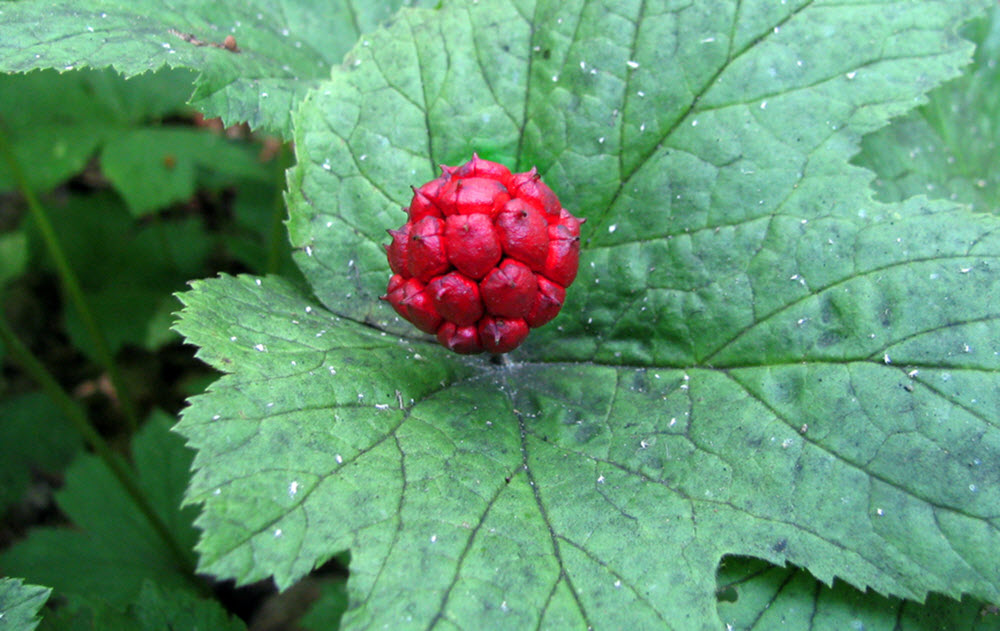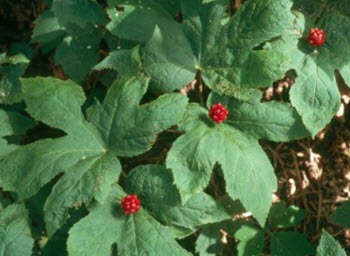Contents
Hydrastis canadensis is a perennial herb belonging to the buttercup family. In English, it is known as goldenseal, orangeroot and yellow puccoon.
The native range for this plant is southeastern Canada and eastern United States.

Scientific classification
| Kingdom | Plantae |
| Order | Ranunculales |
| Family | Ranunculaceae |
| Subfamily | Hydrastidoideae |
| Genus | Hydrastis |
| Species | Hydrastis canadensis |
Native American medicinal use
Historically, the Native Americans living within the natural range of the goldenseal have used it as a medicinal plant and as a coloring agent. Among other things, goldenseal was used as a diuretic, and to treat digestive ailments and eye inflammations. Much of the information that we have about this comes from texts written by Europeans or by Americans of European ancestry, and not by the Native Americans themselves.
In 1798, the American botanist Benjamin Smith Barton published his book “Collections for an Essay Toward a Materia Medica of the United States”. In this book, he writes about how the Cherokee uses goldenseal to treat cancer. Barton mentions that it is a bitter tonic, and that it can be used to clean and treat eye inflammations.
Today’s herbalists
Today, herbalists use goldenseal for its anti-inflammatory, antiseptic, and laxative properties. It is also considered a mild muscle stimulant. It is typically the roots and rhizomes that are harvested, since they are rich in berberine and hydrastine.
Constituents
Isoquinoline alkaloids found in goldenseal
- Hydrastine
- Berberine
- Berberastine
- Hydrastinine
- Tetrahydroberberastine
- Canadine
- Canalidine
The roots and rhizomes of the goldenseal are much richer in hydrastine and berberine than the rest of the plant.
The LD50 (median lethal dose) for berberine is believed to be around 27 mg/kg for humans. Berberine is absorbed slowly through the oral route, causing peak concentrations to occur after roughly four hours.
About the plant
Goldenseal has a thick, yellow rootstock.
Above ground, the stem is purplish and hairy.
The leaves have 5-7 double-toothed lobes.
The plant blooms in late spring; the flowers are small and inconspicious.
The berry is the size of a large raspberry and contains 10-30 seeds.

